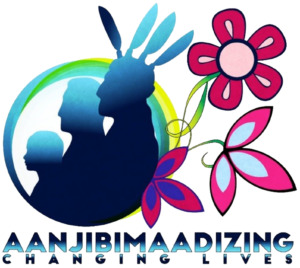SECTION FIVE: INTEGRATION AND COLLABORATION
5.1 EVIDENCE OF ALIGNMENT TO LOCAL OR REGIONAL NEEDS AND STRATEGIES
Provide evidence of alignment to local or regional needs and strategies as outlined by local workforce boards and/or partners in the workforce development plans (local and regional Workforce Innovation and Opportunity Act (WIOA) plans).
Aanjibimaadizing, who administers Mille Lacs Band of Ojibwe ABE, is a workforce development program under Public Law 102-477 which allows Federally recognized Tribes and Alaska Native entities to combine formula-funded Federal grants funds, which are employment and training-related into a single plan with a single budget and a single reporting system. As such, we are a WIOA program.
5.2 WORKFORCE DEVELOPMENT PARTNERS REFERRAL METHODS
Describe the methods of referral between local workforce development partners and the consortium, addressing both how the consortium refers learners to workforce development partners, and how workforce development partners refer clients to the consortium. Include how the consortium promotes concurrent enrollment in Title I programs (Adult, Youth and Dislocated Worker).
As a WIOA program, we also provide these services. See the Aanjibimaadizing Program Policies and Procedures Manual for further details on each of the programs offered.
5.3 HOW INSTRUCTIONAL PROGRAMMING IS DEVELOPED AND DELIVERED
Describe how instructional programming is developed and delivered in coordination and collaboration with other educational, training, and employment resources in the community. Partner entities could include K-12 schools, postsecondary institutions, local workforce development boards, one-stop centers, job training programs, social service agencies, business, industry, labor organizations, community-based organizations, nonprofit organizations and faith communities. (Refer to data collected about student barriers in item 2.4)
In addition to ABE, we also provide trainings and courses that lead to employment and family stability.
We have been partnering with Pine Technical College to offer courses such as Automotive Technician, CNA, PCA, Welding, Administrative Assistant and CLD classes, among others. The need for these is largely determined by the needs of other Mille Lacs Band Departments. To date over 150 people have received their certificate through this partnership.
We partner with the Mille Lacs Band Emergency Services to provide First Aid/CPR classes to the community monthly. These classes are free for clients and $20 for non-clients.
We partner with Mille Lacs Early Education to provide family orientated trainings for parents.
We also have a culture team that provides Ojibwe Language and Culture trainings. In addition to this, we have developed the Ojibwe Rosetta Stone language learning app. Our culture team works with the Mille Lacs Band HHS and DNR departments. We have four culture apprentices on our staff currently who help with these programs.
Our youth program partners with most area schools to provide tutoring and classroom assistance. They also partner with Mille Lacs Corporate Ventures to provide internships.
We work closely with TERO and the Mille Lacs Higher Education as well.
While most of our collaborations are with the Mille Lacs Band, it should be noted that the Mille Lacs Band is the largest employer in our service area and one of the few local business providers.
5.4 COLLABORATION WITH LOCAL AND COUNTY CORRECTIONAL FACILITIES
Describe any collaboration with local and county correctional facilities. Address how the consortium ensures that programming in correctional facilities provides sufficient intensity and duration of instruction. Include the following:
- A brief description of the instructional content and schedule(s) of ABE programming occurring in local and county correctional facilities (refer to document I as appropriate).
- Description of all support received from the correctional institution, including financial.
Our ABE instructor, Jessica Crafton, previously offered ABE at the Mille Lacs County Jail. They have reached out to us to provide ABE services. We are not opposed to this idea, but unsure if our 477 funding will allow us to do this, if it works within the ABE consortium system, and if it’s beneficial for the Mille Lacs Band to offer this. We have a federal review scheduled in June where it may be discussed.
5.5 COLLABORATION WITH TRIBAL NATIONS
Describe any collaboration with Tribal Nations, if one or more are partially or entirely within the geographic area served by the consortium, or if the consortium serves a significant number of members of a particular Tribal Nation.
All of our clients are federally enrolled tribal members. Most are Mille Lacs Band members or have family in our communities who are. See Part 5.3, above, for more information.
5.6 REGIONAL TRANSITIONS PLAN IMPLEMENTATION
Describe the consortium’s role in developing and implementing the regional transitions plan.
As the Mille Lacs Band workforce development center, we develop a 477 plan every 3 years and a 477 Narrative yearly that covers transitional services in our communities. Our staff members serve on various state and regional committees that address workforce, housing, and equity issues.
5.7 REPRESENTATIVES
Indicate the individual who currently serves as the Regional Transitions Coordinator (RTC) for the consortium, and the individual who currently serves as the ABE Representative/s to the Local Workforce Development Board/s. How does the RTC communicate the information from the regional meetings to the entire region? How does the ABE Representative communicate the information from the LWDBs to the entire Workforce Development Area?
The Training Manager, Karen Pagnac, will serve as the Regional Transitions Coordinator (RTC) for the consortium. The local workforce development areas for the main counties we serve (Mille Lacs, Aitkin, and Pine Counties) include Region 3-Area 5, and Region 2-Area3. Region 3-Area 5 will be prioritized as it contains both Mille Lacs and Pine Counties.
Information will be emailed to all ABE staff and the Director of Aanjibimaadizing, Tammy Wickstrom. Information of interest to the public may be published in the Mille Lacs Band newspaper, the Innajimowin and in our seasonal course catalog.
